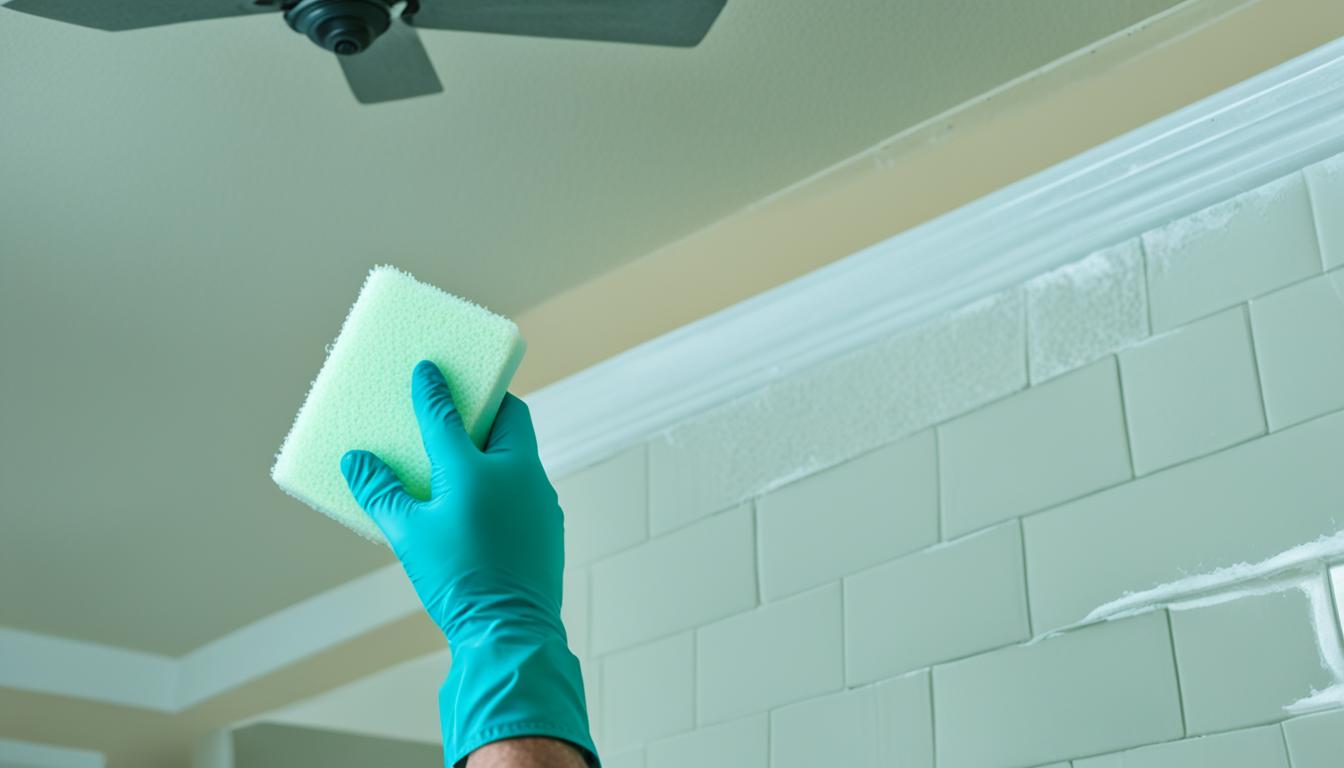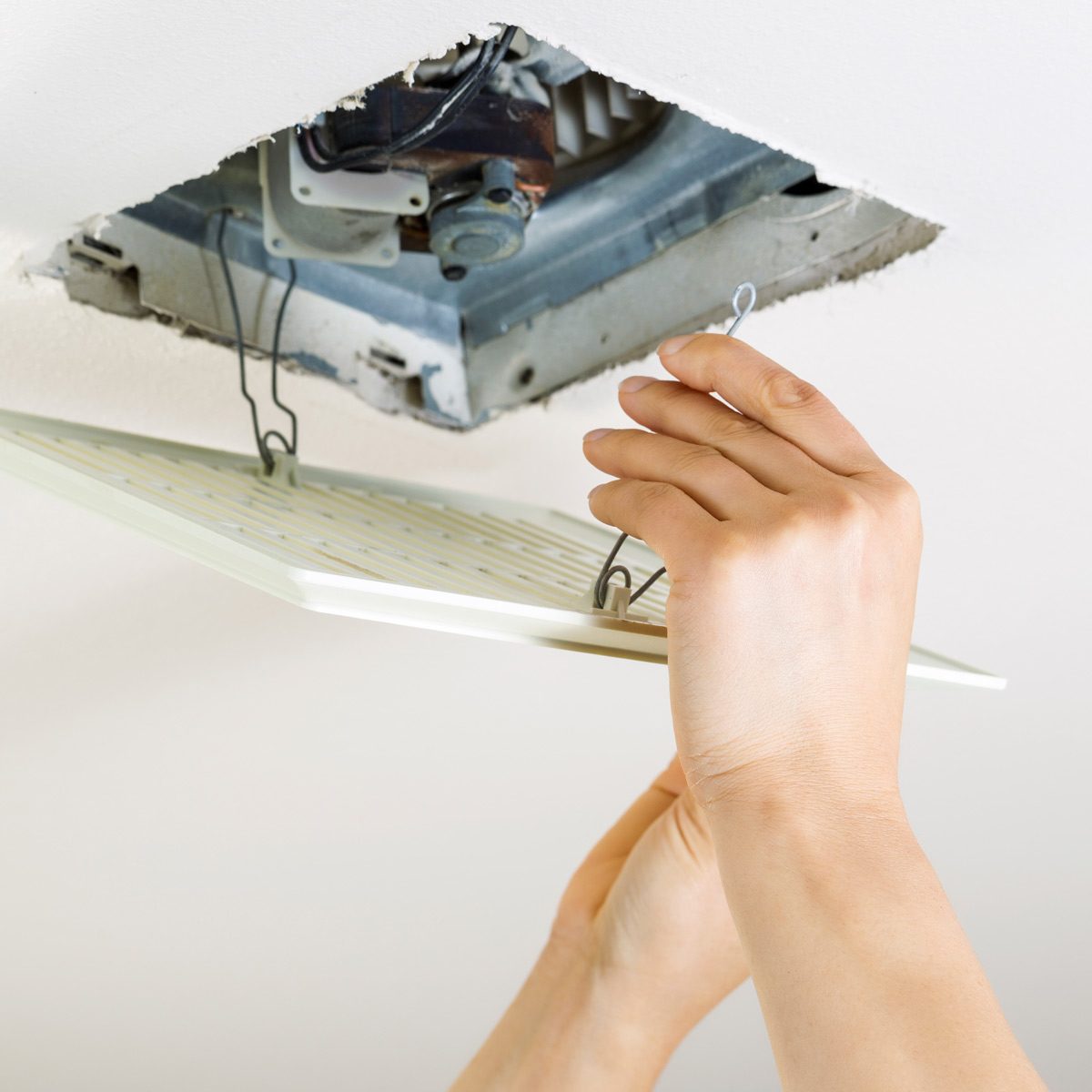Cleaning Techniques for Bathroom Ceiling Fans

How to clean bathroom ceiling fan –
Cleaning a bathroom ceiling fan is essential to maintain good indoor air quality and prevent the spread of bacteria and mold. Here are some effective cleaning methods to remove dust, dirt, and grime from your bathroom ceiling fan.
So, you’ve cleaned your bathroom ceiling fan, but now it won’t turn off? Don’t worry, it’s a common problem. Check out this article on bathroom fan won’t turn off for some troubleshooting tips. Once you’ve fixed that issue, don’t forget to give your ceiling fan a good cleaning to keep it running smoothly.
Before cleaning the fan, ensure it is turned off and the power is disconnected at the circuit breaker. Wear a mask and gloves to protect yourself from dust and debris.
Disassembling the Fan
Most bathroom ceiling fans have a removable grille that can be easily taken off. Use a screwdriver to remove the screws holding the grille in place. Once the grille is removed, you will have access to the fan blades and motor.
Cleaning the Fan Blades
Use a soft cloth or brush to gently wipe away any dust or debris from the fan blades. If the blades are heavily soiled, you can use a mild cleaning solution mixed with water. Dip a cloth into the solution and wring it out before wiping the blades.
Cleaning the Motor
The motor is the heart of the fan, so it is important to clean it carefully. Use a soft cloth or brush to gently remove any dust or debris from the motor housing. Do not use any water or cleaning solutions on the motor, as this could damage it.
Cleaning your bathroom ceiling fan is a breeze! Just grab a damp cloth and wipe down the blades. For a deeper clean, you can remove the fan cover and vacuum the inside. If you’re feeling ambitious, you can even take the fan apart and clean the motor.
And while you’re at it, why not check out some 3d room design ideas to give your bathroom a fresh new look? After all, a clean and stylish bathroom is a happy bathroom!
Reassembling the Fan
Once the fan is clean, it is time to reassemble it. First, attach the fan blades to the motor. Then, replace the grille and secure it with the screws. Finally, turn on the power and test the fan to make sure it is working properly.
Maintenance and Prevention Strategies: How To Clean Bathroom Ceiling Fan

Maintaining a bathroom ceiling fan is crucial to ensure its optimal performance and longevity. Regular cleaning and maintenance can prevent the accumulation of dust, dirt, and other particles that can hinder its functionality.
Cleaning Frequency
The frequency of cleaning a bathroom ceiling fan depends on the usage and environment. If the bathroom is frequently used and the fan is operated regularly, more frequent cleaning is recommended, perhaps every month or two. In less frequently used bathrooms, cleaning every three to six months may be sufficient.
Preventing Dust and Dirt Accumulation
To prevent the accumulation of dust and dirt on the ceiling fan, consider using covers or filters. These can be attached to the fan to trap particles before they reach the blades. Additionally, regularly dusting the bathroom and vacuuming the floor can help reduce the amount of airborne particles that can settle on the fan.
Troubleshooting Common Issues

Bathroom ceiling fans are generally reliable appliances, but like any other mechanical device, they can occasionally experience problems. Here are some common issues and how to troubleshoot them:
Noise
A noisy ceiling fan can be caused by several factors, including:
– Loose or unbalanced fan blades: Check if the fan blades are securely attached to the motor housing. If they are loose, tighten them using a screwdriver. If the blades are unbalanced, you may need to replace them.
– Worn bearings: The bearings in the fan motor can wear out over time, causing the fan to make a grinding or squealing noise. You can try lubricating the bearings with a few drops of oil, but if the noise persists, you may need to replace the motor.
– Electrical problems: A loose or faulty electrical connection can also cause the fan to make a buzzing or humming noise. Check the electrical connections at the fan motor and at the switch. If the connections are loose, tighten them. If the connections are damaged, you may need to replace the wiring.
Vibration
A vibrating ceiling fan can be caused by several factors, including:
– Loose fan blades: Check if the fan blades are securely attached to the motor housing. If they are loose, tighten them using a screwdriver.
– Unbalanced fan blades: If the fan blades are not balanced, they can cause the fan to vibrate. You can try balancing the fan blades yourself using a fan balancing kit, or you can have a professional balance the fan for you.
– Loose or damaged motor mount: The motor mount can become loose or damaged over time, causing the fan to vibrate. Check the motor mount and tighten any loose screws. If the motor mount is damaged, you may need to replace it.
Reduced Airflow, How to clean bathroom ceiling fan
Reduced airflow from a ceiling fan can be caused by several factors, including:
– Dirty fan blades: Dirty fan blades can obstruct the airflow from the fan. Clean the fan blades regularly with a damp cloth.
– Blocked air vents: The air vents in the ceiling fan can become blocked by dust and debris. Clean the air vents regularly with a vacuum cleaner.
– Insufficient power: If the ceiling fan is not getting enough power, it will not be able to generate enough airflow. Check the electrical connections at the fan motor and at the switch. If the connections are loose, tighten them. If the connections are damaged, you may need to replace the wiring.